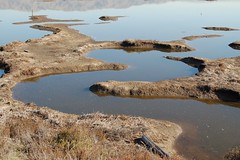 I've had all seven sacraments of the Catholic Church. I almost died when I was a baby and had the Last Rites before its name was changed to the Sacrament of the Sick. I was baptized, made my first confession when I was in second grade and during the rest of elementary school at St. Camillus in Silver Spring, Maryland, had my first communion and was confirmed. I was ordained when I was 29, left the priesthood when I was 39, and got married when I was 45. So I've had all seven.
I've had all seven sacraments of the Catholic Church. I almost died when I was a baby and had the Last Rites before its name was changed to the Sacrament of the Sick. I was baptized, made my first confession when I was in second grade and during the rest of elementary school at St. Camillus in Silver Spring, Maryland, had my first communion and was confirmed. I was ordained when I was 29, left the priesthood when I was 39, and got married when I was 45. So I've had all seven.
Anne Dillard, one of my favorite writers, wrote about people who've been told that they miss the forest for the trees. According to her, when you've seen all the trees you've seen the forest. I think she's right. I have a bachelor's degree in metallurgical engineering and materials science, a masters degree in bioengineering, and a master of divinity degree. I used to think that I just had a hard time making up my mind. Now I think I just want to see all the trees. And I want to see everything together--call it the forest.
I'm a writer now. When I began working as the managing editor of Home Energy magazine, which covers energy efficient, healthy, affordable, and green home building and renovation, I did so because I had just left the priesthood, had no money, and needed to put a roof over my head and food on the table. Now I do it because a home is the place where it all comes together. Home is where we sleep, eat, rest, and relate to one another in the most intense ways--fighting, loving, working together, ignoring one another. Home is the planet writ small. Like people and plants, homes breathe; the air that homes breathe is the air that circles the planet. It's all there, the whole forest.
So it bothers me when scientists and religious people fight over who has the answers. Our planet has problems and it will take all of us to solve them. Scientists and religious people of integrity look for the truth of what connects us only in different ways. Religion makes use of stories and rituals to connect us to one another in the present, past, and future. We're all going to die. We all suffer and we all rejoice. Science looks for that which binds the universe together and uses concepts and formulas to describe it. Either there is a Theory of Everything, or a lot of little Theories that like a mosaic, together make up the whole forest.
I believe that scientists and theologians of integrity get glimpses of the whole from time to time, and that’s what keeps them going. In the Catholic Church, heresy is defined as a partial truth that is promoted in a way that obscures the whole. Both religious people and scientists err when they promote a partial truth as the whole thing. It makes me angry when people claim a corner on the truth. You can’t put truth in a corner. It’s too big. We only get hints and guesses. But those hints and guesses are what will save the planet in the end.
